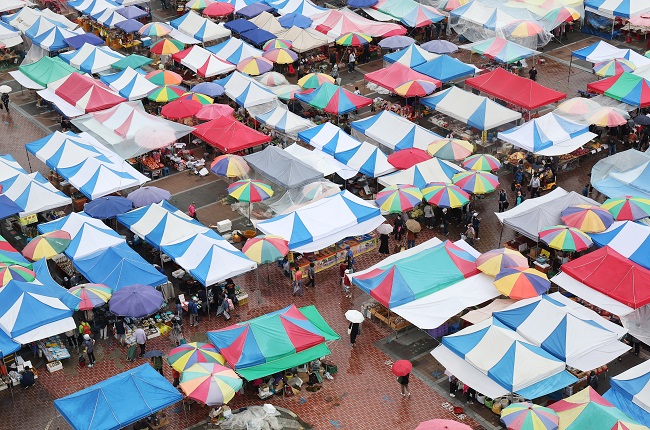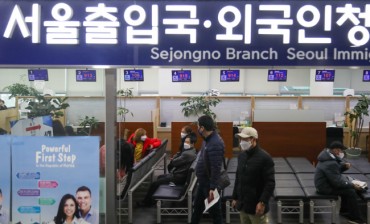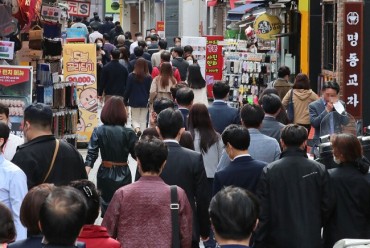
Medical workers carry COVID-19 swab samples collected from inbound travelers at a testing station in the second passenger terminal of Incheon International Airport, South Korea’s main gateway, west of Seoul, in this photo taken Aug. 29, 2022. (Yonhap)
SEOUL, Aug. 29 (Korea Bizwire) — South Korea’s new COVID-19 cases fell below 50,000 on Monday, but the number of critically ill patients kept rising despite a slowing virus trend.
The country reported 43,142 new COVID-19 infections, including 360 cases from overseas, bringing the total caseload to 23,026,960, the Korea Disease Control and Prevention Agency (KDCA) said.
Monday’s count is sharply down from 85,295 recorded the previous day. Daily cases tend to drop on Mondays due largely to fewer tests over the weekend.
The country reported 49 COVID-19 deaths, bringing the death toll to 26,618, the KDCA said. The fatality rate stood at 0.12 percent.
The number of critically ill patients reached 597, up from Sunday’s 581, hitting the highest level since late April.
As of 9 p.m. Monday, the country had reported 110,643 additional infections, up 68,713 from the same time the previous day but down 31,771 from the previous week, according to health authorities and provincial governments.
Daily virus cases are counted until midnight and announced the following morning.
South Korea saw the daily cases decrease on a steady pace from May through most of June, to as low as around 3,400, before the numbers bounced back to the six digits in late July amid a virus resurgence coupled with the summer holiday season.
But the latest wave has managed to keep the daily caseload below 200,000 so far, in line with experts’ earlier prediction that the recent wave would not be as serious as the last time with the peak of over 620,000 cases in one day.

Shoppers visit the stalls of Moran Market, with each umbrella being an individual merchant stand, in the city of Seongnam, south of Seoul, on Aug. 29, 2022, to buy food and offerings for traditional Korean rituals ahead of Chuseok, the Korean harvest holiday that falls on Sept. 9 this year and is part of a four-day break. (Yonhap)
As the latest virus wave shows signs of a decline, health authorities are considering removing the mandatory pre-travel COVID-19 test requirement of inbound travelers to South Korea.
An advisory panel of private experts under the Prime Minister’s Office has recommended the government scrap the pre-travel test requirement, while maintaining the post-arrival test mandate, Jung Ki-suck, a medical professor and the panel’s chair, said in a media briefing.
“The tests are being conducted in a very poor manner. We doubt whether such tests are really necessary and whether it’s right to confuse people about the results of which we are not sure are positive or false positive,” Jung said.
He also said the tests incur huge costs from individuals.
The current mandate requires all arrivals to take a polymerase chain reaction (PCR) test within 48 hours before their departure or a rapid antigen test (RAT) within 24 hours before entering South Korea.
They also have to take an additional PCR test within the first 24 hours of their arrival.
South Korea’s vaccination rate, in terms of the two-dose completion, reached 87 percent of the 52 million population, according to latest KDCA data.
Of them, 65.4 percent have received the first booster shots and 13.9 percent have been vaccinated with second booster shots.
(Yonhap)






